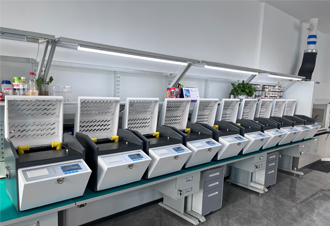 English
English



-
 Afrikaans
Afrikaans -
 Albanian
Albanian -
 Amharic
Amharic -
 Arabic
Arabic -
 Armenian
Armenian -
 Azerbaijani
Azerbaijani -
 Basque
Basque -
 Belarusian
Belarusian -
 Bengali
Bengali -
 Bosnian
Bosnian -
 Bulgarian
Bulgarian -
 Catalan
Catalan -
 Cebuano
Cebuano -
 China
China -
 China (Taiwan)
China (Taiwan) -
 Corsican
Corsican -
 Croatian
Croatian -
 Czech
Czech -
 Danish
Danish -
 Dutch
Dutch -
 English
English -
 Esperanto
Esperanto -
 Estonian
Estonian -
 Finnish
Finnish -
 French
French -
 Frisian
Frisian -
 Galician
Galician -
 Georgian
Georgian -
 German
German -
 Greek
Greek -
 Gujarati
Gujarati -
 Haitian Creole
Haitian Creole -
 hausa
hausa -
 hawaiian
hawaiian -
 Hebrew
Hebrew -
 Hindi
Hindi -
 Miao
Miao -
 Hungarian
Hungarian -
 Icelandic
Icelandic -
 igbo
igbo -
 Indonesian
Indonesian -
 irish
irish -
 Italian
Italian -
 Japanese
Japanese -
 Javanese
Javanese -
 Kannada
Kannada -
 kazakh
kazakh -
 Khmer
Khmer -
 Rwandese
Rwandese -
 Korean
Korean -
 Kurdish
Kurdish -
 Kyrgyz
Kyrgyz -
 Lao
Lao -
 Latin
Latin -
 Latvian
Latvian -
 Lithuanian
Lithuanian -
 Luxembourgish
Luxembourgish -
 Macedonian
Macedonian -
 Malgashi
Malgashi -
 Malay
Malay -
 Malayalam
Malayalam -
 Maltese
Maltese -
 Maori
Maori -
 Marathi
Marathi -
 Mongolian
Mongolian -
 Myanmar
Myanmar -
 Nepali
Nepali -
 Norwegian
Norwegian -
 Norwegian
Norwegian -
 Occitan
Occitan -
 Pashto
Pashto -
 Persian
Persian -
 Polish
Polish -
 Portuguese
Portuguese -
 Punjabi
Punjabi -
 Romanian
Romanian -
 Russian
Russian -
 Samoan
Samoan -
 Scottish Gaelic
Scottish Gaelic -
 Serbian
Serbian -
 Sesotho
Sesotho -
 Shona
Shona -
 Sindhi
Sindhi -
 Sinhala
Sinhala -
 Slovak
Slovak -
 Slovenian
Slovenian -
 Somali
Somali -
 Spanish
Spanish -
 Sundanese
Sundanese -
 Swahili
Swahili -
 Swedish
Swedish -
 Tagalog
Tagalog -
 Tajik
Tajik -
 Tamil
Tamil -
 Tatar
Tatar -
 Telugu
Telugu -
 Thai
Thai -
 Turkish
Turkish -
 Turkmen
Turkmen -
 Ukrainian
Ukrainian -
 Urdu
Urdu -
 Uighur
Uighur -
 Uzbek
Uzbek -
 Vietnamese
Vietnamese -
 Welsh
Welsh -
 Bantu
Bantu -
 Yiddish
Yiddish -
 Yoruba
Yoruba -
 Zulu
Zulu
Evaluating Excitation Current Characteristics Through Comprehensive Testing Methods and Procedures
Understanding Excitation Current Testing in Electrical Machines
Excitation current testing is a crucial process in the field of electrical engineering, particularly when dealing with synchronous machines such as generators and motors. This testing procedure is essential for assessing the performance and reliability of these machines, ensuring they operate efficiently under various conditions.
What is Excitation Current?
Excitation current refers to the current supplied to the field windings of a synchronous machine to create the magnetic field necessary for the machine’s operation. In synchronous generators, this current is supplied by an exciter, which can be either a separate machine or part of the generator itself. The excitation system plays a vital role in stabilizing the output voltage and improving the overall performance of the machine.
Importance of Excitation Current Testing
The excitation current test is performed to verify the integrity and functionality of the excitation system. This test helps in several ways
1. Performance Evaluation It ensures that the excitation system can provide the necessary current to maintain the desired electrical performance of the machine. An inadequate excitation can lead to voltage instability and poor performance.
2. Fault Detection By monitoring excitation current, engineers can identify any abnormalities that may indicate faults in the machine. Irregularities in the current can suggest issues such as winding faults, insulation breakdown, or problems within the exciter.
excitation current test

4. Maintenance Planning Regular excitation current testing aids in predictive maintenance strategies. By monitoring trends over time, engineers can forecast when maintenance is needed, preventing unplanned outages and extending the lifespan of the equipment.
How is the Test Conducted?
The excitation current test typically involves measuring the current flowing through the excitation system while the machine is in operation. This can be done using a variety of instruments, such as multi-meters or current transformers connected to data acquisition systems. The procedure may vary depending on whether the machine is connected to the grid or running in standalone mode.
1. Preparation Before conducting the test, it is essential to ensure that all safety protocols are in place. This includes de-energizing non-essential systems and having appropriate safety gear.
2. Data Collection Measurements are taken at various load conditions to assess how the excitation current responds. This data is crucial for creating a comprehensive profile of the machine’s performance.
3. Analysis After collecting data, it is analyzed to determine if the excitation current levels are within acceptable limits. Engineers look for patterns that might indicate potential problems and compare the results against established benchmarks or manufacturer specifications.
4. Reporting The final step involves documenting the findings and making recommendations based on the test results. This report is vital for ongoing maintenance and operational strategy.
Conclusion
Excitation current testing is an integral part of the monitoring and maintenance of synchronous machines. By regularly conducting these tests, engineers can ensure the machines operate efficiently and reliably, thereby reducing downtime and maximizing productivity. Understanding the significance of excitation current not only enhances the performance of electrical machines but also supports the overall health of electrical power systems. Regular testing, combined with thorough analysis, ultimately leads to improved operational effectiveness and safety in electrical engineering practices.
-
Testing Equipment Industry Sees Major Advancements in 2025: Smart & Precision Technologies Lead the WayNewsJun.06,2025
-
Applications of Direct Current Generators in Renewable Energy SystemsNewsJun.05,2025
-
Hipot Tester Calibration and Accuracy GuidelinesNewsJun.05,2025
-
Digital Circuit Breaker Analyzer Features and BenefitsNewsJun.05,2025
-
Benefits of Real-Time Power Quality Monitoring Devices for Industrial EfficiencyNewsJun.05,2025
-
Earth Fault Loop Testing in High-Rise Building Electrical SystemsNewsJun.05,2025



